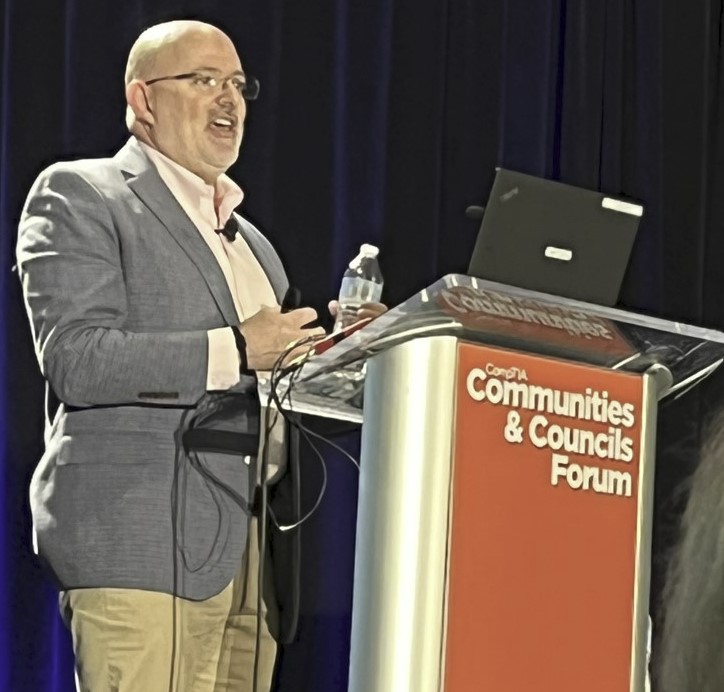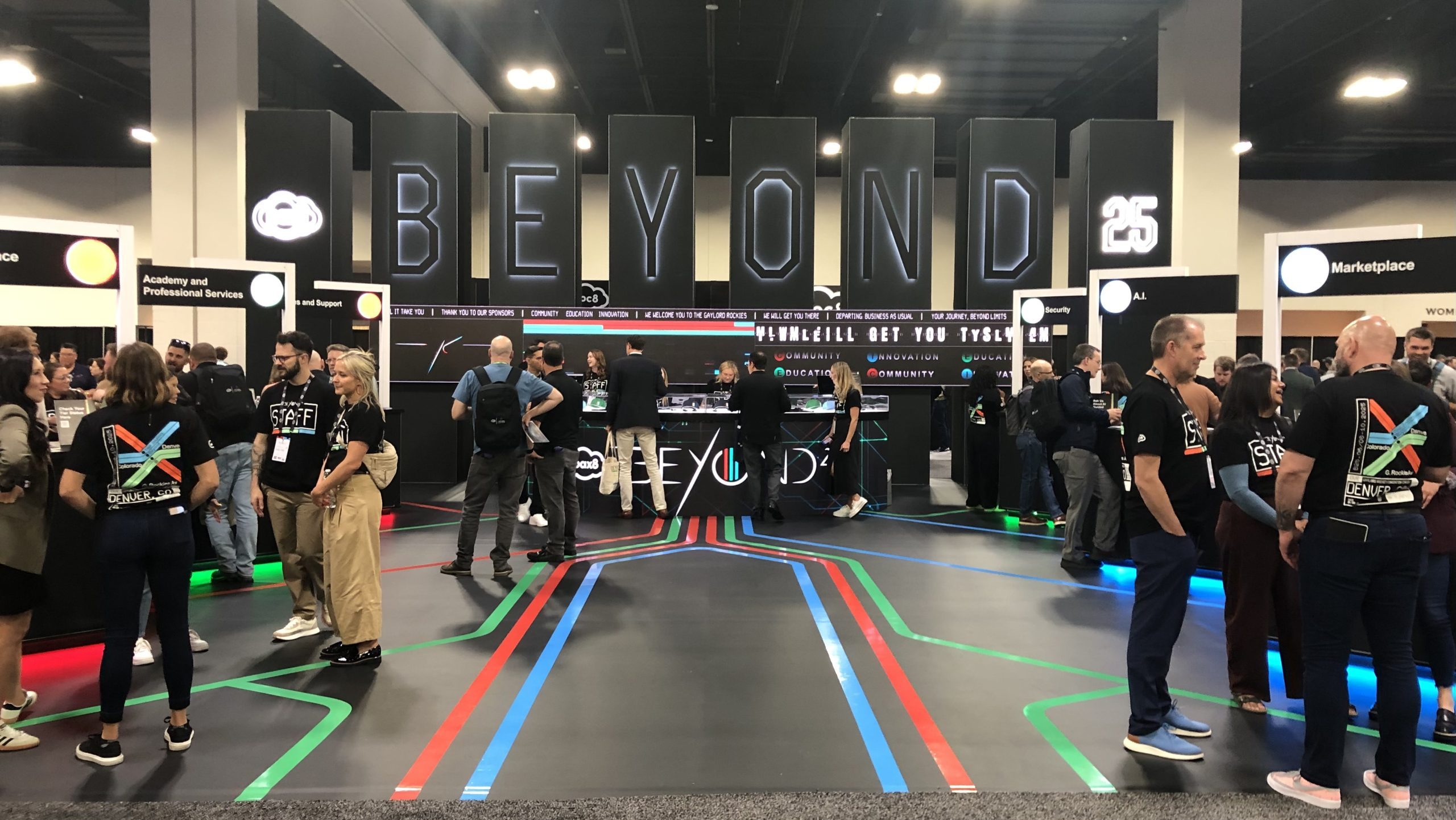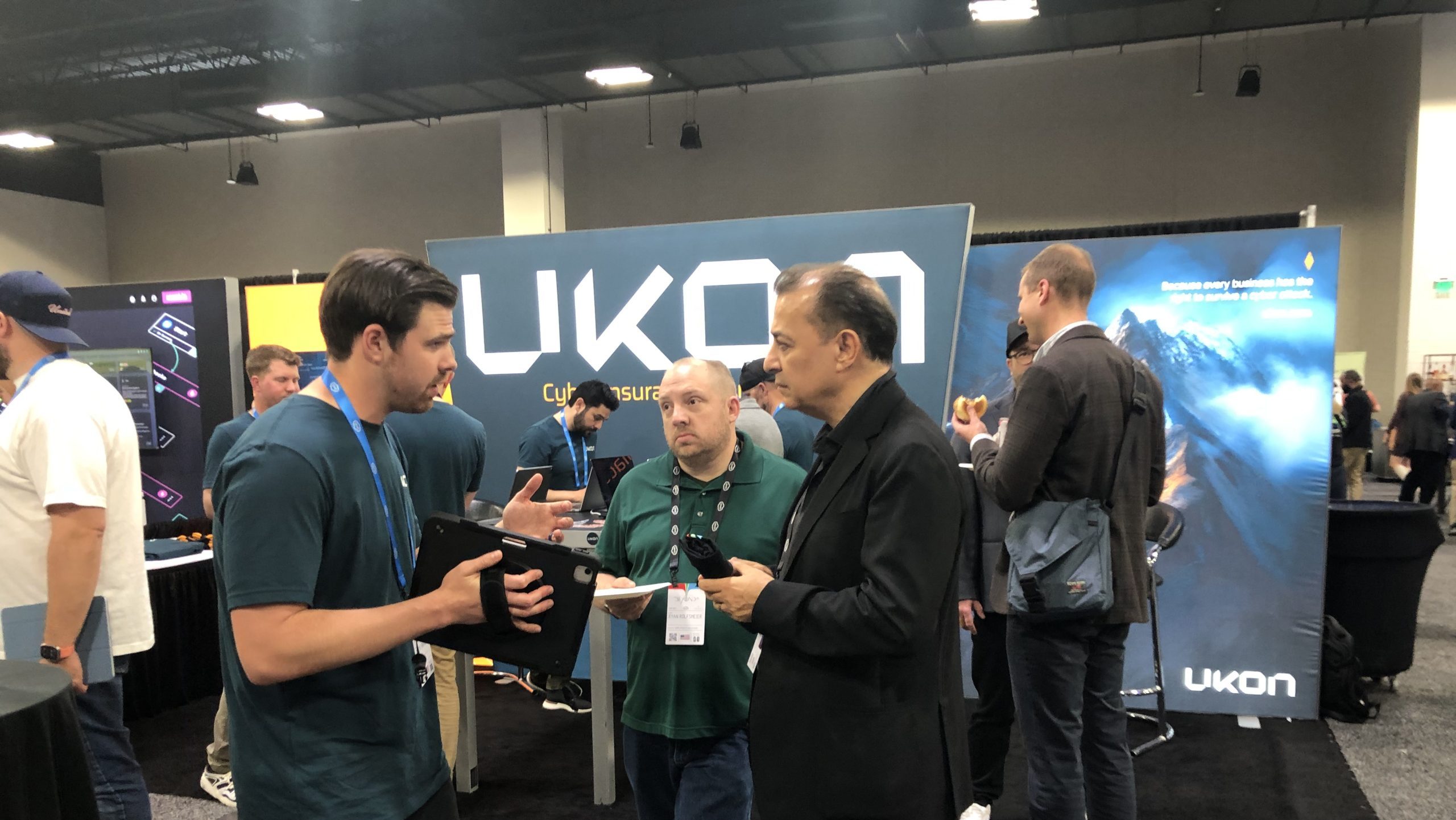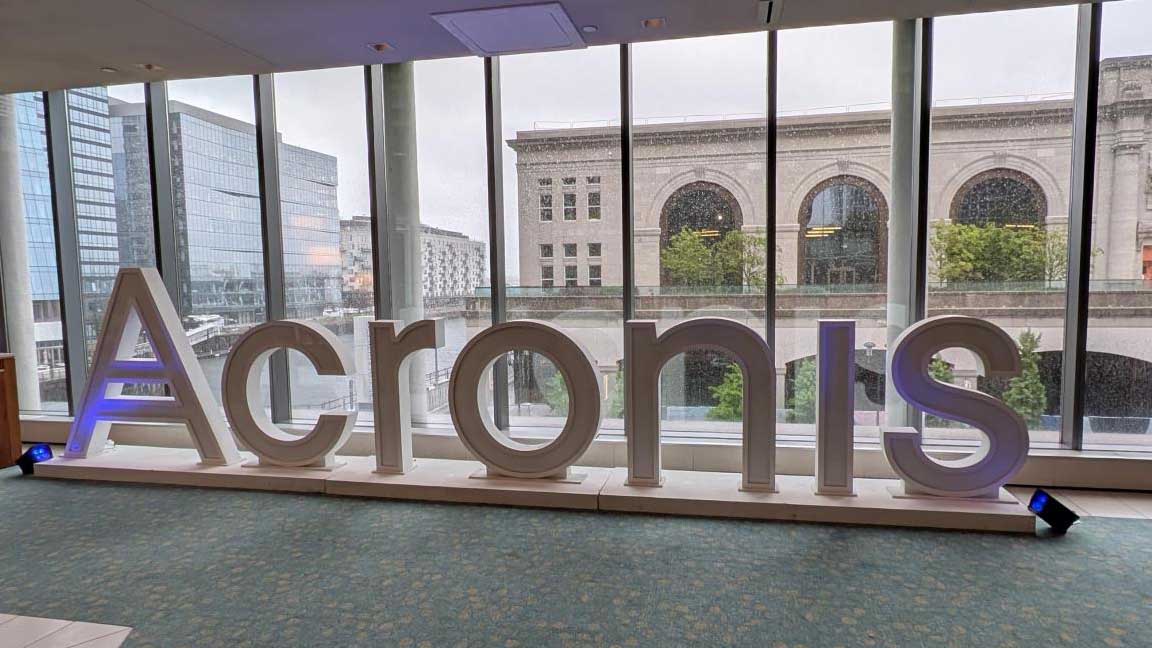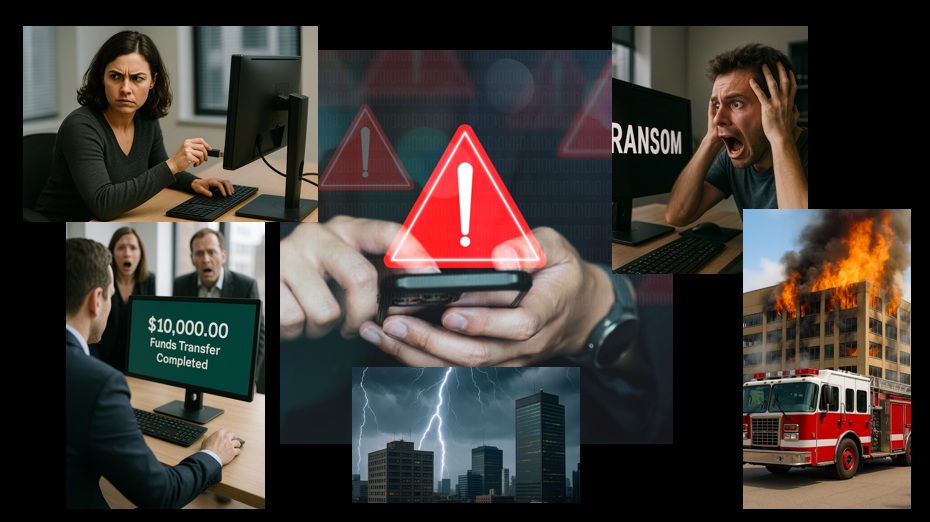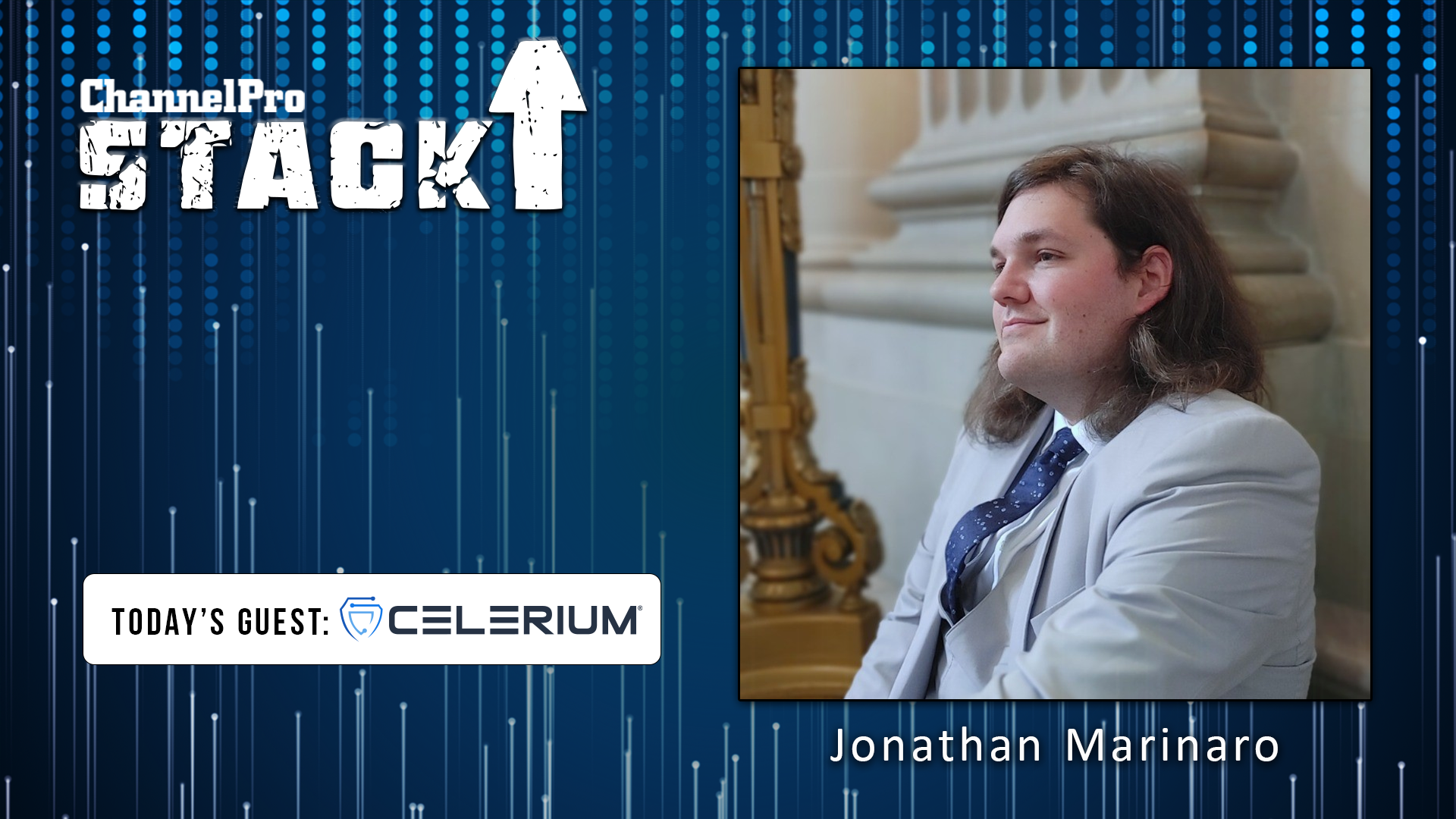CompTIA is allowing all MSP members to join its cybersecurity information sharing and analysis organization (ISAO) free of charge.
The industry trade association announced the new policy at its 2022 Communities and Councils Forum (CCF), which wrapped up today in Chicago.
“We’re taking away the very small dues barrier that was there and saying, ‘as long as you’re a member of CompTIA and you’re an MSP, you’re a member of the CompTIA ISAO,'” said MJ Shoer, CompTIA’s recently appointed chief community officer, during a CCF keynote yesterday.
Enrollment for ISAO members had previously cost $500, an intentionally modest sum that nevertheless prevented some CompTIA MSPs from participating.
“We’ve got to take that barrier off the table,” said Shoer yesterday in a conversation with ChannelPro, adding that the financial impact of giving away ISAO access will be minimal. “We’re not making a ton of money on the ISAO. It was never intended to be a money maker.”
ISAOs like CompTIA’s are designed to help potential victims of cyberattacks exchange information about threats more easily and respond to them more effectively. The federal government has been actively encouraging businesses across industries to form ISAOs since 2015, due to the increasing prevalence and damaging impact of ransomware and other forms of cybercrime.
Shoer hopes that getting more MSPs involved with the group will deepen its pool of threat intelligence.
“We need to get more of the MSPs sharing what they’re seeing on their own networks and in their customers,” he says. “Let us examine it and make sure it’s something that we’ve already seen and already alerted about. If not, we’ll jump right on it and track it down and get an alert out there and get some mitigation recommendations out there.”
Unveiled early in 2020 and officially launched that summer, the CompTIA ISAO was originally spearheaded by managed services software and service provider ConnectWise in 2019. Shoer, a former MSP and ConnectWise partner, stepped in as the group’s executive director later that year, a few months before CompTIA, a widely respected, vendor-neutral non-profit, assumed ownership of the venture. He remains as big a believer in the organization’s mission as ever.
“Cyber’s not an option,” he says. “If you’re not investing in cybersecurity expertise within your own organization, and you’re not eating your own dog food and doing what you tell your clients they need to be doing, you’re probably not going to be around very much longer.”
Other items high on Shoer’s to-do list for the year ahead include completing the rollout of CompTIA’s new regional community structure, which matches a newly formed community for North American members with existing ones for members in Australia/New Zealand, the “Benelux” countries (Belgium, the Netherlands, and Luxembourg), and the U.K.
Unlike years past, in which a single set of industry advisory councils and topic-related committees in areas like cybersecurity, managed services, and emerging technologies served everyone worldwide, each regional community will now have dedicated councils and committees of their own, based on membership interests. All regions will have a localized version of CompTIA’s Advancing Tech Talent and Diversity Committee, however.
“We think that’s truly universal in terms of the skills gap that we have as well as general diversity in the industry,” Shoer explains, adding that a new global task force will ensure that regional bodies share ideas, insights, and best practices.
“Right now, things tend to be a little siloed in whatever region or whatever community they’re in,” he says. “We want to get them all talking.”
Shoer’s predecessor in his new role, Nancy Hammervik, ran communities and industry relations at CompTIA for over 11 years. She leaves behind an organization with some 250,000 registered users and more than 2,000 corporate members.
She also played an instrumental role in the creation of the emerging technology community, the channel development advisory council, and both the Women in IT community and Advancing Diversity Community, which subsequently combined to form the Advancing Tech Talent and Diversity Community, as well as CompTIA’s acquisition of TechGirlz, a non-profit dedicating to getting young women interested in technology, and IT professional membership group the Association of Information Technology Professionals.
“I owe you a deep gratitude for the incredible house that you built called the CompTIA community,” said Shoer during his keynote. “It’s got a strong foundation.”
Hammervik has stepped into a new role as head of CompTIA Tech Career Academy (CTCA), the association’s training and career preparation arm.
“Workforce is a big issue for all of us, and where is the pipeline coming from?” asked Hammervik during a general session appearance at CCF yesterday. “The Academy is absolutely contributing to that.” CTCA graduated 1,400 students and placed more than 1,000 of them in jobs last year, she noted.
Shoer, who freely admits he has big shoes to fill, plans to follow Hammervik’s example by paying close attention to community feedback.
“It doesn’t matter if you have thoughts about your CompTIA membership, if you have ideas about what we can do more of, what we could do better, or what maybe we should do less of,” he told CCF attendees yesterday. “We want to hear from you.”




